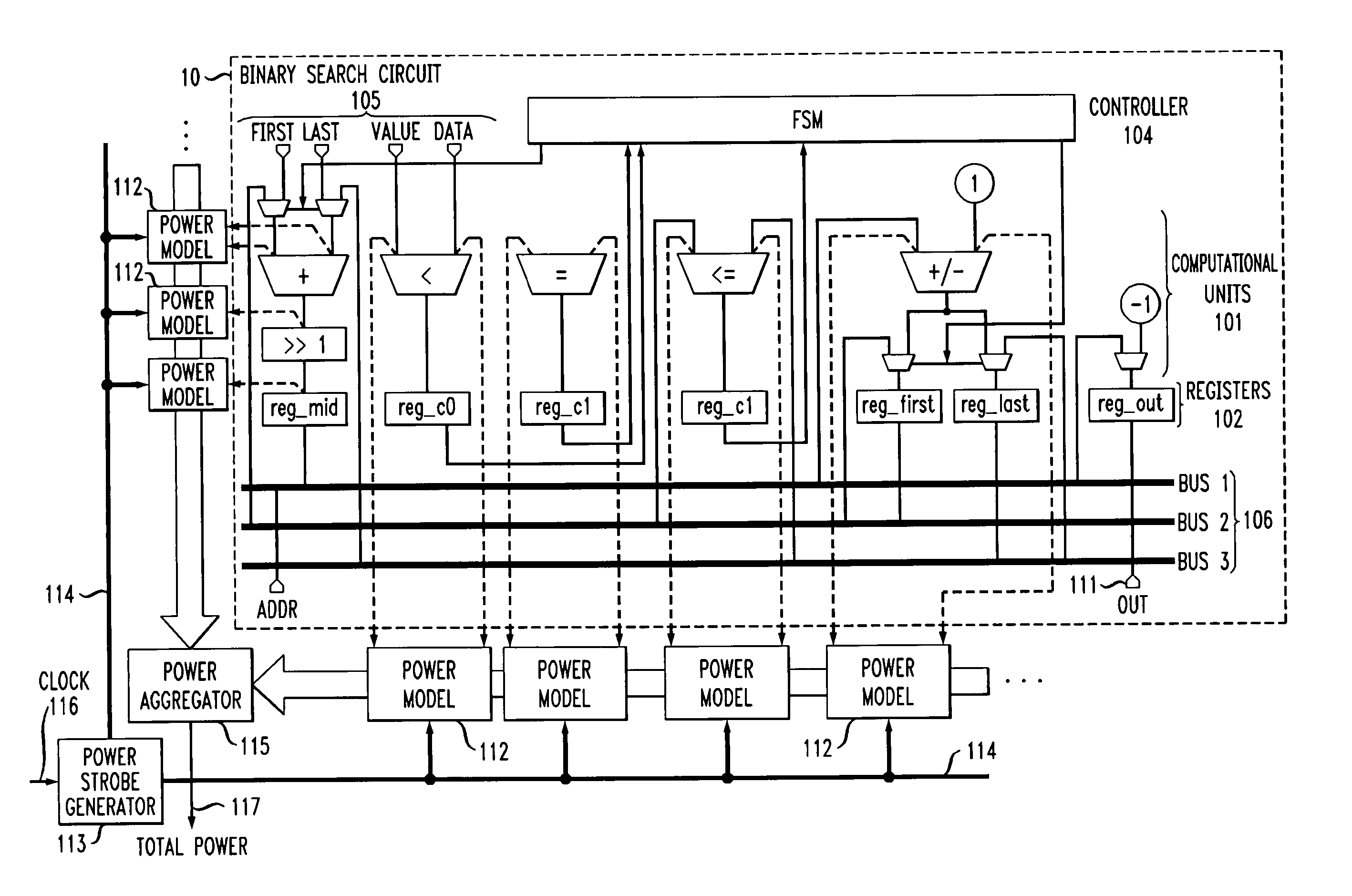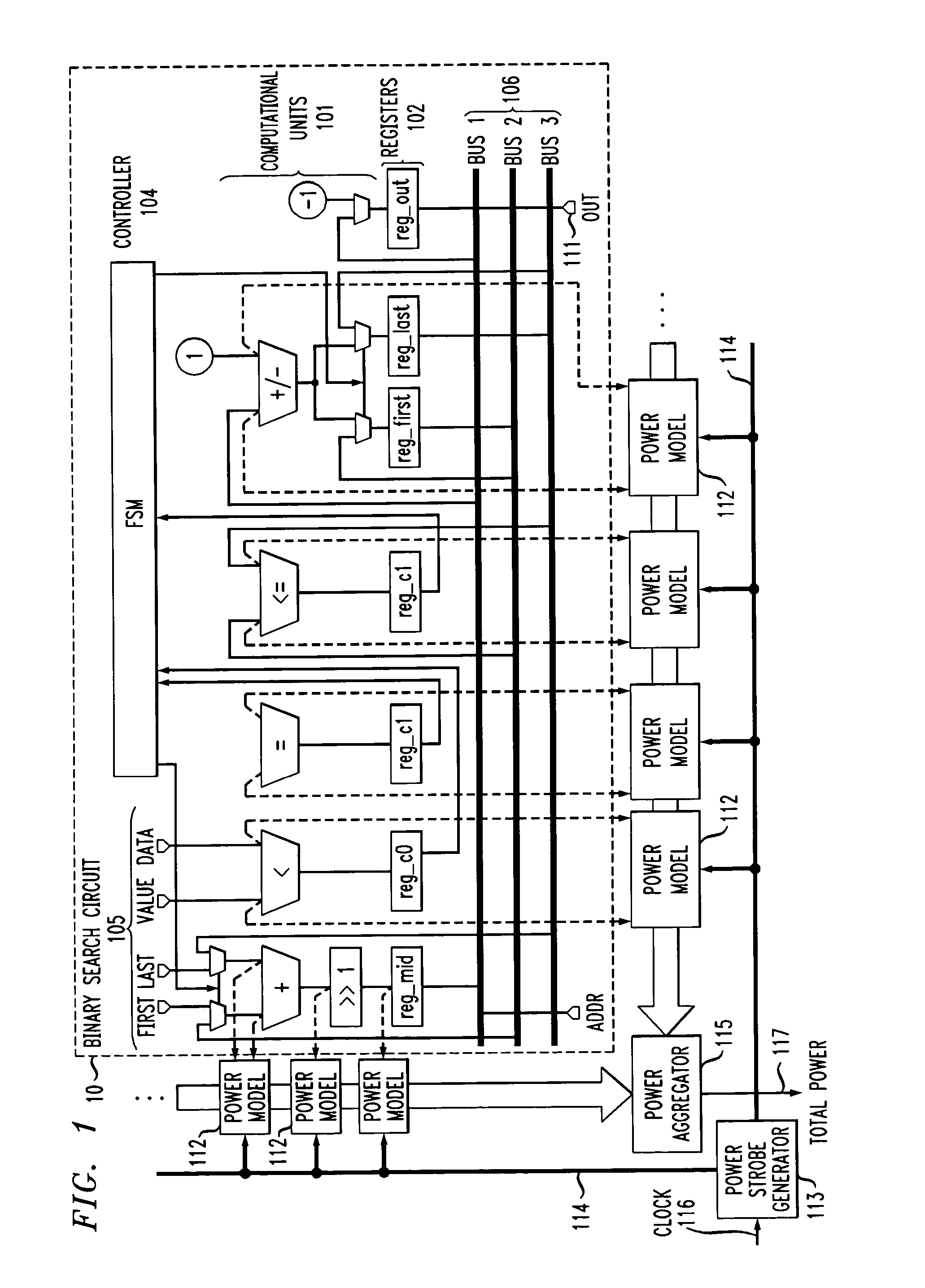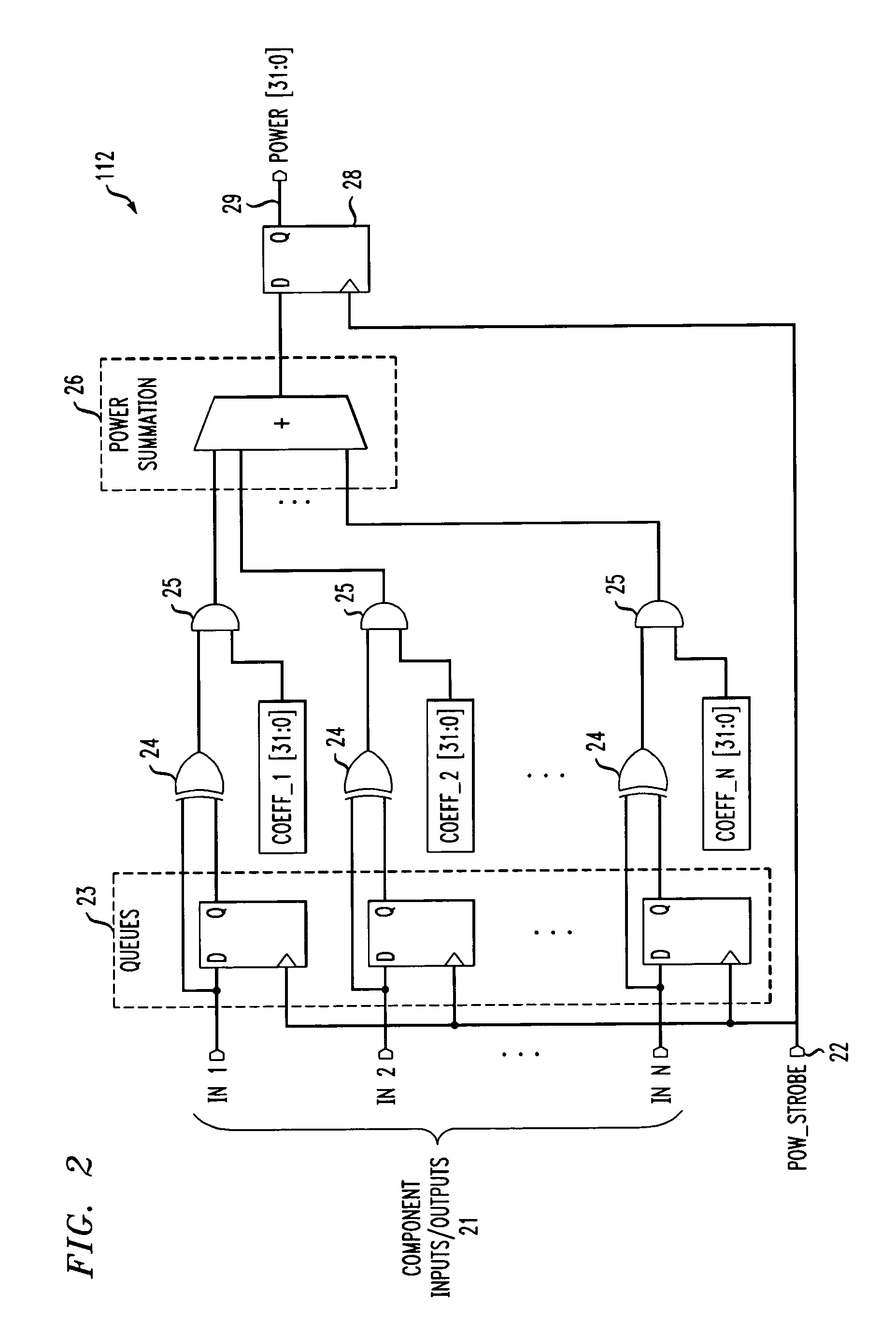Power estimation through power emulation
- Summary
- Abstract
- Description
- Claims
- Application Information
AI Technical Summary
Benefits of technology
Problems solved by technology
Method used
Image
Examples
Embodiment Construction
1.0 Overview
[0022] The concept of power emulation pursuant to the principles of the present invention is applicable at different levels of abstraction. It is here presented in the context of register-transfer level (RTL) power estimation. Since RTL descriptions in practice can contain an arbitrary combination of macroblocks (arithmetic units, registers, multiplexers, etc.) and random logic gates, the descriptions herein apply directly to gate-level descriptions as a special case.
[0023] The power-model-enhanced circuit of FIG. 1 includes a functional circuit 10, which is illustratively a binary search circuit of conventional design, represented at the register-transfer level. The binary search circuit 10 includes a number of computational units 101, registers 102 and buses 106, operating under the control of a controller 104. Inputs 105 for the binary search circuit are the conventional “first,”“last,”“value,” and “data” inputs. The output of the binary search circuit, indicated a...
PUM
 Login to View More
Login to View More Abstract
Description
Claims
Application Information
 Login to View More
Login to View More - R&D
- Intellectual Property
- Life Sciences
- Materials
- Tech Scout
- Unparalleled Data Quality
- Higher Quality Content
- 60% Fewer Hallucinations
Browse by: Latest US Patents, China's latest patents, Technical Efficacy Thesaurus, Application Domain, Technology Topic, Popular Technical Reports.
© 2025 PatSnap. All rights reserved.Legal|Privacy policy|Modern Slavery Act Transparency Statement|Sitemap|About US| Contact US: help@patsnap.com



